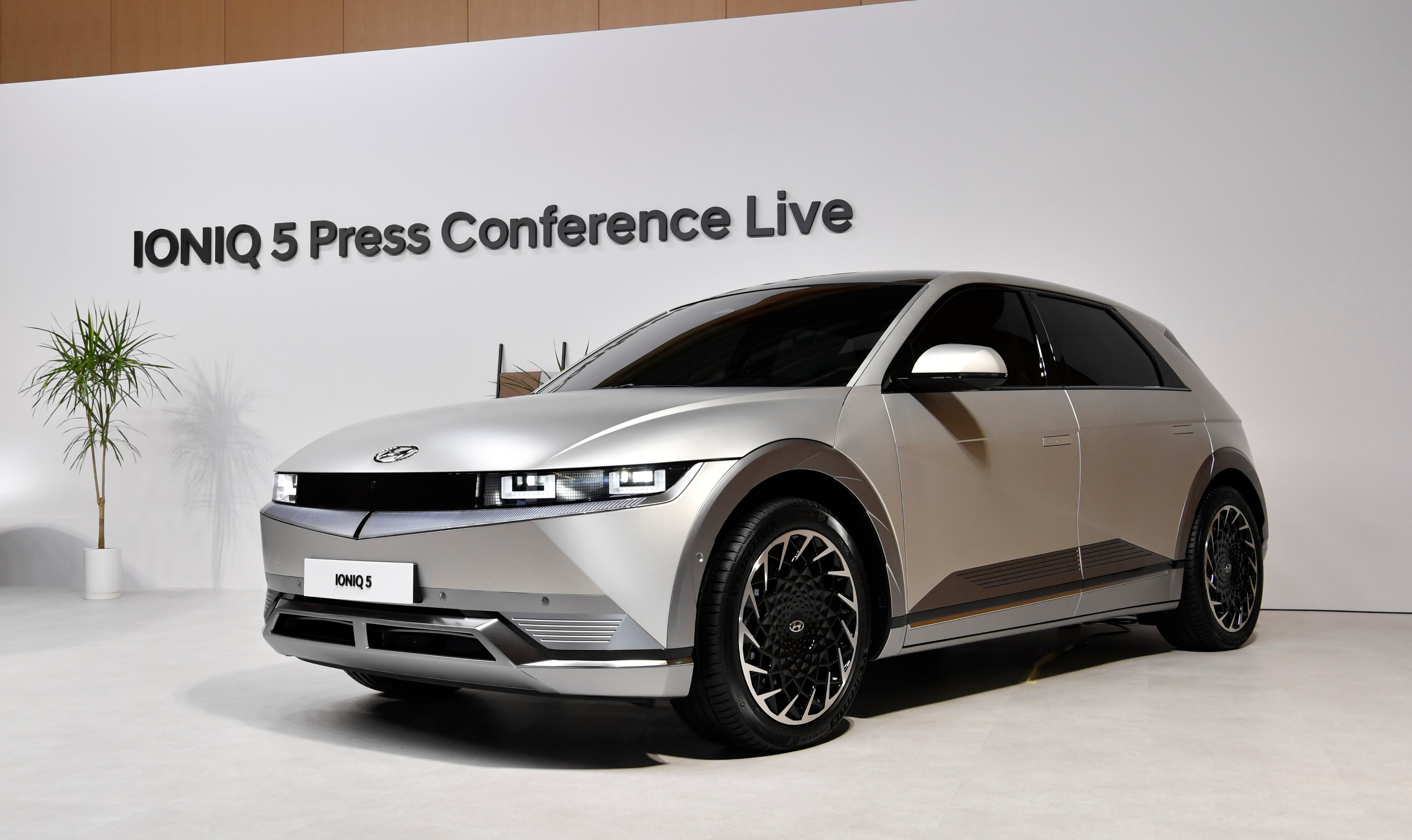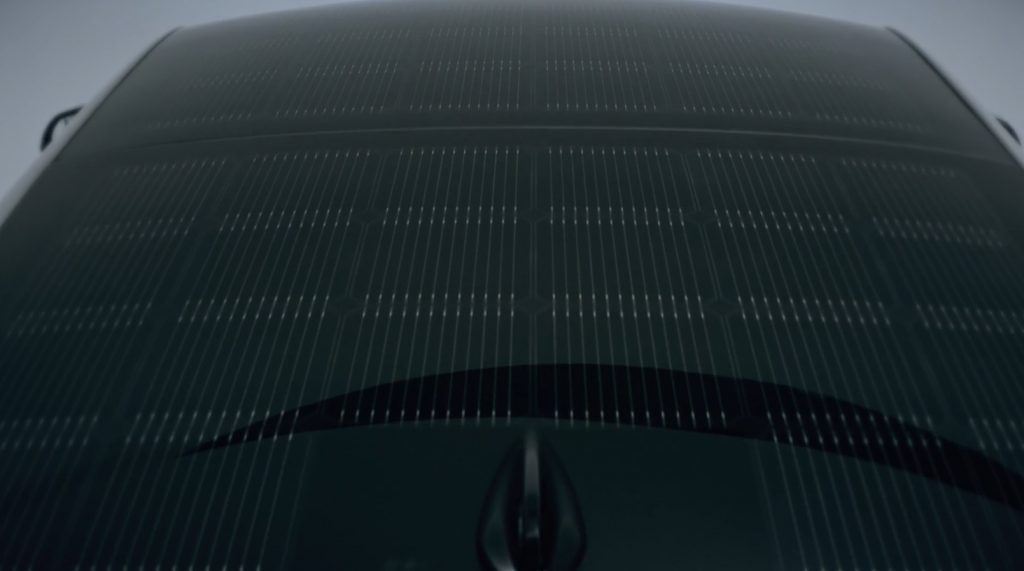

Hyundai just revealed the Ioniq 5. The latest EV launch comes after the vehicle was spotted charging in Bathurst, Australia, a full month and a half ahead of the global unveiling.
The Ioniq5 will be the first of many vehicles to use the company’s new E-GMP platform. This includes a scaleable 800-volt battery system, bi-direcitonal charging and the choice between rear wheel drive or four wheel drive configurations.
When it comes to Performance the Ioniq 5 there is some confusion around the acceleration numbers. On the UK website, Hyundai list the 0-60mph time as 5.3 seconds, while on the EU website, they list the 0-100km/h time as 5.2 seconds. 60mph is 96.561km/h so 0-100km time has to be higher, not lower.
While acceleration in this EV, will be far better than most car owners are used to, it won’t be close to the Tesla Model Y’s 3.7s 0-100km/h time, but not everyone is chasing that performance.
The car comes with a choice of 2 different batteries, 72.6-kWh and 58-kWh.
What EV owners will care about is the range. In that respect, there’s also another issue with the figures shown on the Hyundai website and what’s shown in the press materials. The EU website lists the driving range as this – ‘Enjoy up to 500km driving range on a single charge’. That sounds great, but an image of an Ioniq5 (see below), charged to 100%, shows the max range at just 480km.
While it may be just a difference of 20km, Hyundai really need to sort out these discrepancies.
When it come to charging the car, Hyundai says you can recharge on a 350kW charger from 10% to 80% in just 18 minutes. This makes it one of the fastest recharging EVs ever. This is achieved thanks to a combination of 400V and 800V systems for multi-charging, enabling you to grab 100km of range in just 5 minutes.
On a road trip, a charge at one of our Ultra-fast rechargers from networks like Chargefox or Evie Networks, would have you ready to go after a coffee and a toilet break.
Customers in Germany, UK, Norway, The Netherlands and France will soon have the opportunity to reserve one of 3000 IONIQ 5 Project 45 Limited Edition.
This limited edition features solar panels in the glass roof of the car. It seems Hyundai are joining a number of others who do believe the amount of charge you can collect per day, is worth the added cost.

From watching the launch videos, there’s a number of design attributes that are interesting in the Ioniq5.
It’s hard to miss the very unique wheels, which I think are some of the best looking aerodynamically efficient EV wheels I’ve seen. There’s the flush door handles that are a simple rectangle, rotating out with a push, in the opposite direction to the Model 3, so that’ll be interesting to see how well the work.


Drivers will be able to use a keyfob to open the charging hatch (and presumably to lock and unlock the car. Hyundai’s Bluelink mobile app will enable familiar vehicle controls for EV owners including climate controls, getting the vehicle’s location and charge status.
On the display we can see the presence of driver profiles, suggesting that each driver will be able to store their own preferences like seat position, music and navigation preferences etc.


The glove-box uses a tray style slider, rather than a old down rotation, something new and that could allow for more lockable storage.


The seats are maybe one of the biggest reasons why you buy this car. Labelled as zero-gravity, they recline an awfully long way and have a footrest that folds out to support you legs. This makes sleeping in your car all the more comfortable as you look through that glass roof to the stars. Perhaps there’s a romantic or two at Hyundai.


The dash itself is interesting. Made from recycled materials, like much of the car’s interior, Hyundai have positioned two 12.3″ displays on the front dash. One of these displays the traditional instrument cluster UI to the driver, while the center display, visible to the driver and rear-seat passengers, provides information like the time, navigation map, battery state of charge, temperature and the currently playing song.
One more unique feature that Hyundai has come up with is called V2L (Vehicle to Load). This means the on-board battery pack can be leveraged to charge devices inside and outside the car.


Outside the car they have a crazy adapter that you connect to the charging port, then a standard power cord to the adapter. This means you can power basically anything you want from the car. Obviously this draws down on your available range, but I think it’s a neat idea that opens up a world of opportunities (at up to 3.6kW).


Finally there’s that center console that moves back and forward between the seats. After close to 25 years of driving, I’ve never once thought I wish I could move that center console back, but if you have, now there’s a car for you. In theory, by moving the console back 140mm, you could slide from the driver’s seat, to the passenger seat if you are in a tight parking spot and can’t get out.
It’s hard to talk about electric cars without discussing their options for autonomy. Right now, Hyundai are committing to just level 2 features which really amount to fairly standard driver assist features, with the exception of lane centering on the highway. Centering is an important differentiation to the standard lane-keeping. There’s also going to be some assistance when changing lanes, but we’ll have to get hands-on to know how well that works.
The Ioniq 5 comes with a 5-year unlimited mile warranty, with an 8-year or 160,000km warranty on the lithium-ion polymer battery.
As for the question of when the Ionic 5 joins the Kona Electric in Australia, it is expected to be available in late 2021. You can register your interest here.
Hyundai says the price for the IONIQ 5 is £45k which includes a £3k government grant, so the on the road price is £48k. This directly translates to an Australian price of A$85,635.48, not including allowances for VAT to GST translations, import and sales tax charges.
